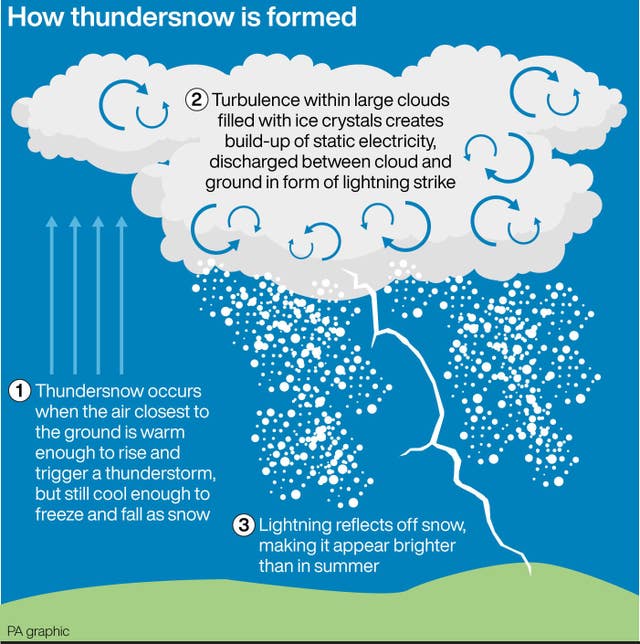Worried residents alerted police after hearing explosions during stormy weather in Scotland.
However, they were due to a natural phenomenon called thundersnow.
Police Scotland Control Rooms, which responded after receiving a number of calls about explosions and strange noises, tweeted on Friday at around 5am: “Please do not be alarmed, we are currently experiencing thunder and lightning.”

Here are some details about thundersnow and how it happens.
– What exactly is thundersnow and what causes it?
Thunderstorms which form in wintry conditions can lead to heavy downpours of snow which, along with the usual thunder and lightning, is called thundersnow, the Met Office said.
Forecasters describe thundersnow as “unusual” as it can only occur during a few months of the year.
We have have received a number of calls regarding people concerned about explosions heard. Please do not be alarmed, we are currently experiencing thunder and lightning. 🌩️⚡❄️ pic.twitter.com/YyZ9rbBadr
— Police Scotland Control Rooms (@polscotcontrol) December 4, 2020
– What does thundersnow look like?
Lightning appears brighter when thundersnow happens at night because light is reflected off the snowflakes.
– Why is thundersnow quieter than thunder?
The snow inside the storm muffles the sound of the thunder.
It means that while the thunder from a typical thunderstorm might be heard many miles away, during a bout of thundersnow “it will only be heard if you are within two to three miles of the lightning,” according to the Met Office.




Comments: Our rules
We want our comments to be a lively and valuable part of our community - a place where readers can debate and engage with the most important local issues. The ability to comment on our stories is a privilege, not a right, however, and that privilege may be withdrawn if it is abused or misused.
Please report any comments that break our rules.
Read the rules here